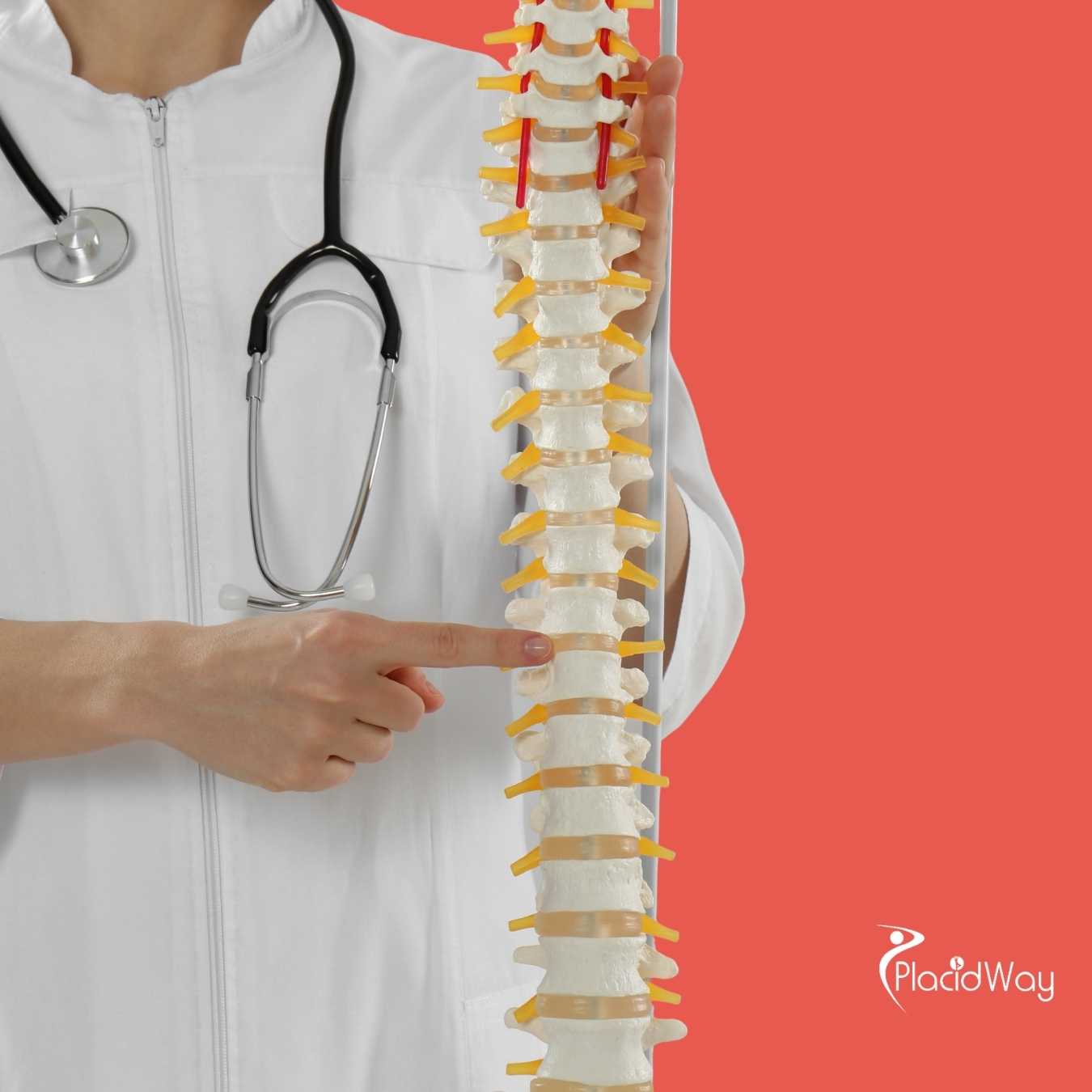Stem Cell Therapy for Hip Pain: Costs, Benefits, and What to Expect
If you're dealing with persistent hip pain, you've likely explored numerous treatment options, from physical therapy to medication, and perhaps even considered surgery. Amidst these choices, stem cell therapy for hip pain has emerged as a promising regenerative medicine approach. Many people are curious about its effectiveness and, critically, its cost. Understanding the financial aspect is a major step in deciding if this innovative treatment is right for you. This guide will help you navigate the complexities of stem cell therapy cost for hip pain, providing clear answers to your most pressing questions.
Stem cell therapy aims to help the body repair damaged tissues, potentially alleviating pain and improving function in joints like the hip. It involves taking healthy stem cells, often from your own body, and injecting them into the affected area. While the prospect of natural healing is appealing, the financial commitment can be significant. Throughout this article, we'll delve into the various factors that influence the overall price, explore payment options, and even touch upon seeking treatment abroad, empowering you with the knowledge to make an informed decision about your hip health journey.
What is the Typical Stem Cell Therapy Cost for Hip Pain?
The cost for stem cell therapy for hip pain can indeed fluctuate quite a bit. On average, most patients can expect to pay anywhere from $5,000 to $15,000 for a single hip treatment. This estimate usually includes the initial consultation, the stem cell harvesting procedure, the preparation of the cells, and the injection into the hip joint. It’s important to remember that these are general figures, and some clinics might charge more or less depending on their unique offerings and the complexity of your specific case.
When considering these costs, it's helpful to understand that you're paying for a specialized medical procedure that requires advanced equipment and highly trained medical professionals. The technology used to extract, process, and inject stem cells is sophisticated, contributing to the overall price. Moreover, the number of injections required, and whether you need treatment for one or both hips, will directly impact the total expenditure.
What Factors Influence the Price of Stem Cell Treatment for Hip Pain?
Several key factors contribute to the varying stem cell therapy cost for hip pain. Understanding these can help you anticipate the potential expenses:
- Source of Stem Cells:
- Autologous: Stem cells derived from your own body (e.g., bone marrow, adipose tissue) often involve an additional procedure for harvesting, which can increase the cost.
- Allogeneic: Stem cells from a donor source (e.g., umbilical cord, amniotic fluid) might have different processing costs.
- Type of Stem Cells Used: Different types of regenerative treatments exist, including:
- Bone Marrow Aspirate Concentrate (BMAC): Generally more expensive due to the extraction procedure.
- Adipose-Derived Stem Cells (ADSC): Also involves a minor surgical procedure (liposuction) for extraction.
- Platelet-Rich Plasma (PRP): While often used alongside stem cells, PRP alone is typically less expensive.
- Number of Injections: Some conditions may require multiple injections or follow-up booster shots, increasing the overall cost.
- Clinic Reputation and Expertise: Highly experienced clinics with renowned specialists and state-of-the-art facilities may charge more for their services.
- Geographic Location: Costs can vary significantly by city, state, or country, often reflecting the local cost of living and healthcare market.
- Ancillary Services: The price might include pre-treatment imaging (MRI, X-rays), post-treatment physical therapy, medications, and follow-up consultations.
Each of these elements plays a role in the final price tag for your hip stem cell therapy price. It's crucial to get a detailed breakdown of what's included in any quoted price to avoid surprises.
Is Stem Cell Therapy for Hip Pain Covered by Insurance?
Unfortunately, for most individuals, the answer to whether stem cell therapy for hip pain is covered by insurance is usually no. Most private insurance companies, Medicare, and Medicaid typically categorize regenerative therapies like stem cell treatments as "experimental" or "investigational." This classification means they do not have sufficient clinical evidence (in the eyes of insurers) to be considered standard medical care, and therefore, they are not covered.
This lack of coverage means that the entire cost of stem cells for hip treatment often falls to the patient as an out-of-pocket expense. While research continues to advance and some specific applications might gain approval in the future, it's essential to plan for self-payment if you are considering this treatment now. Always verify with your insurance provider directly, as policies can vary, but generally, do not expect coverage for regenerative medicine for hip conditions.
What Are the Financing Options for Stem Cell Therapy for Hip Pain?
Since insurance typically doesn't cover the stem cell therapy cost for hip pain, many clinics and financial institutions offer solutions to help make treatment more accessible. Here are common financing options:
- Medical Loans: Specialized lenders offer loans specifically for healthcare procedures, often with competitive interest rates and flexible repayment terms.
- Healthcare Credit Cards: Options like CareCredit allow you to finance healthcare expenses, sometimes with promotional periods of deferred interest.
- Personal Loans: Banks or credit unions offer personal loans that can be used for any purpose, including medical treatments.
- Clinic Payment Plans: Many clinics understand the financial burden and offer in-house payment plans, allowing you to pay for your hip stem cell therapy price in installments.
- Health Savings Accounts (HSAs) and Flexible Spending Accounts (FSAs): If you have an HSA or FSA, you can use these tax-advantaged accounts to pay for eligible medical expenses, including regenerative treatments, if deemed medically necessary by your physician.
- Crowdfunding: For significant out-of-pocket costs, some patients turn to online crowdfunding platforms to gather support from friends, family, and the wider community.
It's always recommended to discuss financing options directly with the clinic you are considering, as they may have established relationships with lenders or offer their own structured payment plans.
How Does the Cost of Stem Cell Therapy Compare to Hip Replacement Surgery?
When comparing the financial implications, stem cell therapy for hip pain typically presents a different cost profile than traditional hip replacement surgery. A total hip replacement in the United States can cost anywhere from $30,000 to $60,000, and sometimes even more, depending on the hospital, surgeon's fees, anesthesia, and post-operative care. While a significant portion of hip replacement surgery is usually covered by insurance, patients are still responsible for deductibles, co-pays, and co-insurance, which can add up to several thousands of dollars.
In contrast, the cost of stem cells for hip treatment, while an out-of-pocket expense, usually falls within the $5,000 to $15,000 range. This means that upfront, regenerative medicine for hip pain may appear less expensive. However, it’s crucial to weigh the long-term effectiveness, recovery time, and the potential need for repeat treatments with stem cells versus the often definitive, though invasive, nature of surgery. Both options have their merits and costs, and the best choice depends on your specific condition, preferences, and financial situation.
What Types of Stem Cell Therapies Are Available for Hip Pain, and Do Costs Vary?
The specific type of stem cell therapy used can significantly impact the overall stem cell therapy cost for hip pain. Different sources yield different types of cells, each with distinct collection and processing requirements:
- Bone Marrow Aspirate Concentrate (BMAC): This therapy involves extracting stem cells from your own bone marrow, typically from the hip bone. The process requires a minor surgical procedure to aspirate the marrow, followed by centrifugation to concentrate the stem cells. Because of the invasive nature of harvesting, BMAC tends to be on the higher end of the cost spectrum for hip stem cell therapy price.
- Adipose-Derived Stem Cells (ADSC): These stem cells are harvested from your fat tissue, usually through a mini-liposuction procedure. Like BMAC, it involves an additional step for harvesting the fat, which is then processed to isolate and concentrate the stem cells. The cost for ADSC therapy is comparable to or slightly less than BMAC, depending on the clinic.
- Platelet-Rich Plasma (PRP): While not strictly stem cell therapy, PRP is often used alongside stem cells or as an initial regenerative treatment. It involves drawing your blood, centrifuging it to concentrate platelets (which contain growth factors), and injecting this plasma. PRP is generally less expensive than therapies using actual stem cells, often ranging from a few hundred to a couple of thousand dollars per injection.
The complexity of harvesting, processing, and the number of cells obtained all contribute to the variation in cost across these different therapeutic approaches for regenerative medicine for hip conditions.
Can I Get Stem Cell Therapy for Hip Pain Abroad? (Medical Tourism)
For many, the high stem cell therapy cost for hip pain in their home country, combined with a lack of insurance coverage, makes looking abroad an attractive option. Medical tourism for regenerative treatments, including stem cell therapy for hip pain, is growing in popularity. Countries such as Mexico, Costa Rica, Panama, and Germany have established clinics that offer these therapies, often at a significantly lower price point compared to the United States or Canada. The reasons for lower costs abroad can include:
- Lower operating expenses and labor costs for medical facilities.
- Different regulatory environments, which can sometimes streamline processes or permit broader access to certain therapies.
- The overall lower cost of living and healthcare services in these regions.
However, when considering medical tourism for stem cell therapy, it's crucial to research clinics thoroughly, ensure they adhere to international safety standards, and understand the implications of receiving treatment in a different country, including travel logistics and follow-up care.
What Should I Consider When Choosing a Clinic for Stem Cell Therapy for Hip Pain, Especially for Medical Tourism?
Choosing the right clinic for your stem cell therapy for hip pain, whether at home or through medical tourism, requires careful consideration. This decision can impact both your health outcomes and the overall cost of stem cells for hip treatment. Here's what to look for:
- Accreditation and Regulations: Ensure the clinic meets national and international standards. For international clinics, look for certifications from reputable bodies.
- Physician Experience and Credentials: Verify that the doctors performing the procedure are highly qualified, experienced in regenerative medicine, and specialize in orthopedics or sports medicine.
- Treatment Protocols: Understand the exact type of stem cells used, their source, and how they are processed. Inquire about the number of cells administered and the safety measures in place.
- Transparency in Pricing: A reputable clinic will provide a clear, itemized breakdown of all costs associated with your hip stem cell therapy price, without hidden fees.
- Patient Testimonials and Outcomes: Look for verifiable patient reviews and, if possible, data on their success rates for similar conditions.
- Follow-up Care: Understand what post-treatment care is provided, especially important if you are traveling internationally. How will follow-up appointments or complications be handled?
Thorough research and asking detailed questions are essential to ensure you receive safe and effective treatment, particularly when exploring stem cell clinics abroad.
Are There Hidden Costs Associated with Stem Cell Therapy for Hip Pain?
While clinics strive to be transparent, it's vital for patients to be aware of potential expenses beyond the quoted stem cell therapy cost for hip pain. These additional costs can add up, especially if you haven't factored them into your budget.
- Initial Consultation Fees: Many clinics charge for the first consultation, which may or may not be credited toward the treatment cost if you proceed.
- Diagnostic Imaging: X-rays, MRIs, or ultrasounds to confirm your diagnosis and pinpoint the injection site are often separate charges.
- Medications: Post-procedure pain relief or other prescriptions might not be included.
- Physical Therapy: Regenerative treatments are often complemented by physical therapy to maximize results, incurring additional professional fees.
- Follow-up Visits: Subsequent check-ups to monitor progress may incur separate charges.
- Travel and Accommodation: If you are traveling for treatment, particularly for medical tourism for stem cell therapy, remember to budget for flights, hotels, ground transportation, and meals.
Always ask for a comprehensive, itemized list of all potential expenses from your chosen clinic before committing to treatment to fully understand the total hip stem cell therapy price.
What Are the Alternatives to Stem Cell Therapy for Hip Pain?
Before considering stem cell therapy for hip pain, it's common for patients to explore a range of other treatments. These alternatives address hip pain through various mechanisms and come with different costs and recovery profiles.
- Conservative Management:
- Physical Therapy: A foundational treatment to strengthen muscles, improve flexibility, and reduce pain. Costs vary based on sessions needed and insurance coverage.
- Medications: Over-the-counter pain relievers (NSAIDs), prescription anti-inflammatories, or muscle relaxants can manage symptoms.
- Lifestyle Modifications: Weight loss, activity modification, and assistive devices can alleviate stress on the hip joint.
- Injections:
- Corticosteroid Injections: Provide temporary relief from inflammation and pain. Costs are typically covered by insurance.
- Hyaluronic Acid Injections: Lubricate the joint and reduce friction. Often covered by insurance for knee pain but less consistently for hip.
- Surgery:
- Arthroscopy: Minimally invasive surgery to repair cartilage or remove loose bodies.
- Hip Resurfacing: Caps the head of the femur instead of replacing it entirely.
- Total Hip Replacement (Arthroplasty): Replaces the damaged bone and cartilage with prosthetic components, a major surgery typically covered by insurance but with significant recovery.
Each of these alternatives has its own set of risks, benefits, and costs, which should be thoroughly discussed with your healthcare provider to determine the most appropriate path for your specific condition and overall health goals.
If you're exploring options for hip pain treatment, including medical tourism for advanced therapies, contact PlacidWay to discover how we can help you find trusted healthcare solutions and clinics worldwide.

.png)

.png)









Share this listing